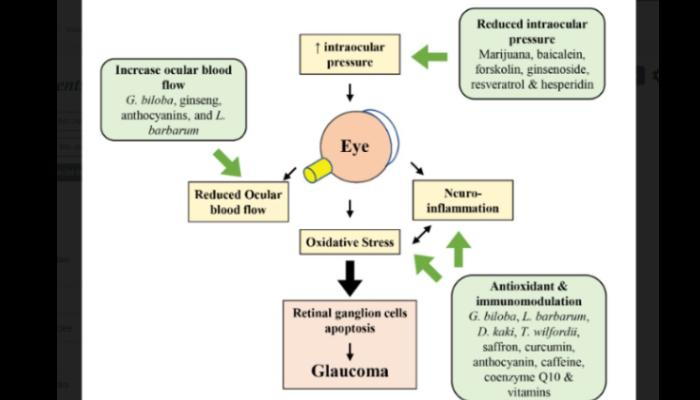
Glaucoma is one of the leading causes of irreversible blindness, causing 6.6% of all blindness in 2010 [1]. According to the World Health Organization’s (WHO) World Report on Vision, of the estimated 2.2 billion people having a vision impairment around the world, glaucoma affects an estimated 6.9 million people [2]. It has been further estimated that by 2040, approximately 111.8 million people worldwide aged between 40 and 80 years old will be affected by glaucoma [3]. Glaucoma is generally caused by intraocular pressure (IOP, >21 mmHg) build-up, resulting from blockage of intraocular fluid and aqueous humor drainage [4]. The elevated IOP progressively damages the retinal ganglion cells (RGCs) and optic nerve, causing visual field constriction that affects the peripheral field initially and the central vision field gradually [5]. Glaucoma patients require lifelong treatment and follow-up, and the disease has a significant negative impact on patients’ quality of life in terms of anxiety, psychological well-being, daily life, driving and confidence in healthcare [6]. The main risk factors for glaucoma prevalence include age, family history with glaucoma, African American race, thinner central corneal thickness, pseudoexfoliation, pigment dispersion and myopia [7]. Additionally, an association between diabetes, hypertension, triglyceride levels and glaucoma were also identified [7,8].
Glaucoma is one of the leading causes of irreversible blindness. It is generally caused by increased intraocular pressure, which results in damage of the optic nerve and retinal ganglion cells, ultimately leading to visual field dysfunction. However, even with the use of intraocular pressure-lowering eye drops, the disease still progresses in some patients. In addition to mechanical and vascular dysfunctions of the eye, oxidative stress, neuroinflammation and excitotoxicity have also been implicated in the pathogenesis of glaucoma. Hence, the use of natural products with antioxidant and anti-inflammatory properties may represent an alternative approach for glaucoma treatment. The present review highlights recent preclinical and clinical studies on various natural products shown to possess neuroprotective properties for retinal ganglion cells, which thereby may be effective in the treatment of glaucoma. Intraocular pressure can be reduced by baicalein, forskolin, marijuana, ginsenoside, resveratrol and hesperidin. Alternatively, Ginkgo biloba, Lycium barbarum, Diospyros kaki, Tripterygium wilfordii, saffron, curcumin, caffeine, anthocyanin, coenzyme Q10 and vitamins B3 and D have shown neuroprotective effects on retinal ganglion cells via various mechanisms, especially antioxidant, anti-inflammatory and anti-apoptosis mechanisms. Extensive studies are still required in the future to ensure natural products’ efficacy and safety to serve as an alternative therapy for glaucoma.
Conclusions
One of the most common causes of vision loss is glaucoma. Recent data have gained insight into glaucoma pathogenesis, which involves a complex interaction of LC cupping, insufficient ocular blood supply, oxidative stress and neuroinflammation. The use of natural products with antioxidant, anti-inflammatory and anti-apoptotic properties may prove to be beneficial in the treatment of glaucoma. Furthermore, natural products are easily available and are cost effective. Natural products have been shown to protect against RGC loss in in vitro and in vivo preclinical studies, as well as in clinical trials. The present review highlighted various natural products such as GBE, L. barbarum, D. kaki, T. wilfordii, saffron, curcumin, anthocyanin, caffeine, coenzyme Q10 and vitamins B3, D and E that confer neuroprotective effects on RGCs. Additionally, IOP has been shown to be reduced by treatment with marijuana, baicalein, forskolin, ginsenoside, resveratrol and hesperidin. GB, ginseng, anthocyanins and L. barbarum were reported to increase ocular blood flow in glaucoma. Additionally, caffeine administration has been shown to reduce IOP through its adenosine receptor antagonist properties. Although these may serve as alternative targets for glaucoma treatment other than IOP-lowering drugs, more evidence is required to warrant the recommendation of these novel targets. Admittedly, a few of these natural products have had no or limited clinical testing, restricting their potential use in the treatment of glaucoma. Nevertheless, it is important to ensure that the bioavailability and safety of these natural products are checked in well-designed randomized clinical trials to further determine their therapeutic potential in glaucoma.
